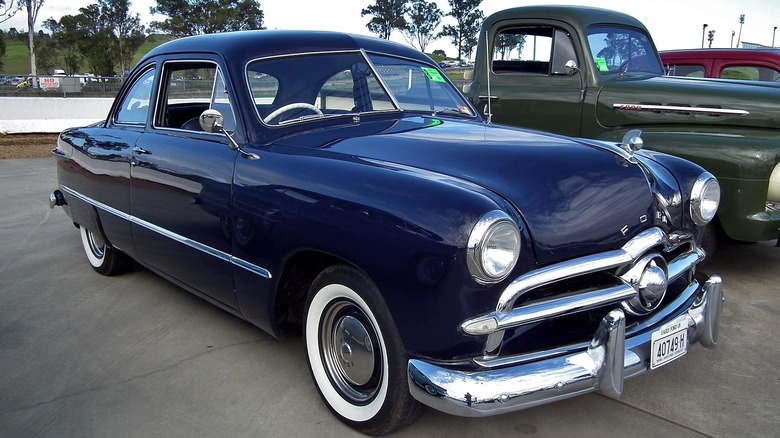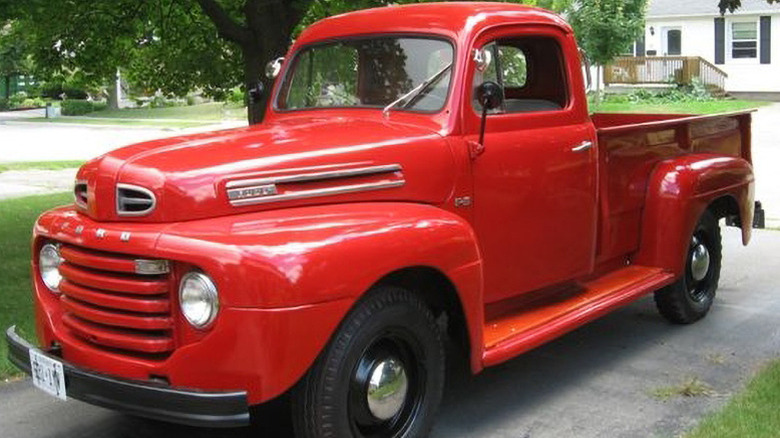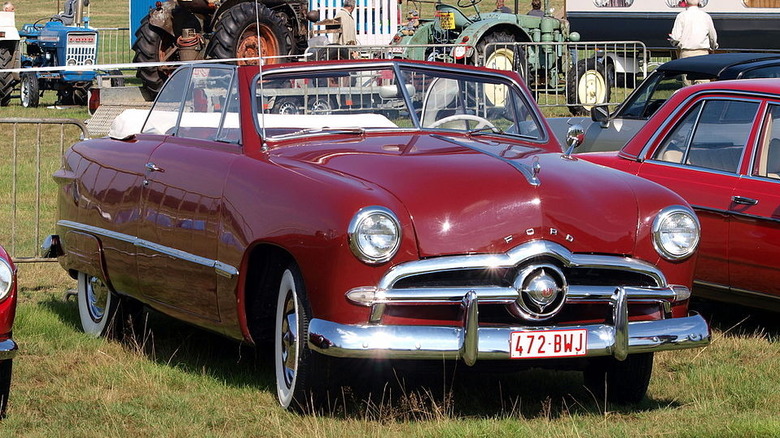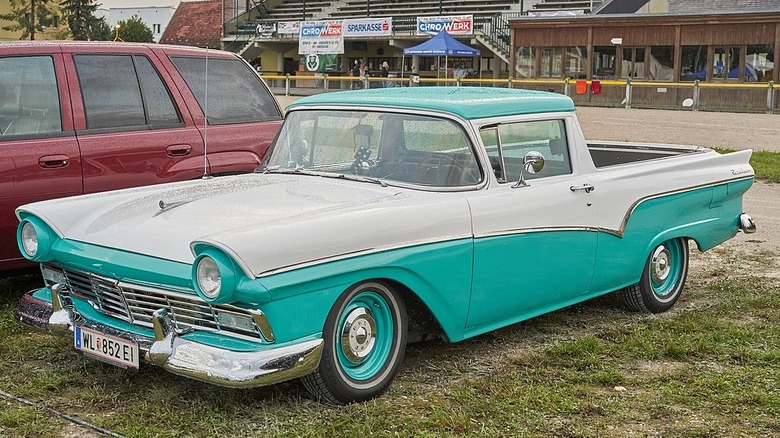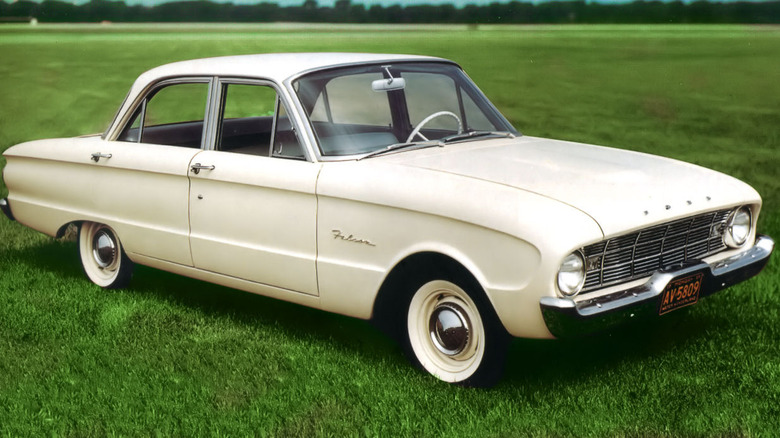4 Underappreciated Classic Cars From The Early Days Of Ford
Henry Ford perfected the assembly line process to help make his Model T one of the most important products in American industrial history, and the company he built still thrives today. Ford's 10 all-time most popular models have accounted for around 150 million sales, and the F-150 pickup has been the best-selling vehicle in the United States for nearly half a century.
The Mustang was an instant hit despite at first coming with an anemic inline-six engine, and the Mustang's powerful engines since then have made it a high-horsepower beast. Ford's other highlights include the 1950s Thunderbird, a quintessential symbol of American cruising culture, and one of the coolest names ever put on a car.
Ford's entire catalog isn't as universally lauded as these models, though, and the company's proud tradition was built with the help of some of its more underrated vehicles. These four classics might not be as beloved as the Mustang or T-Bird, and most are undervalued on the secondhand market, but they all played an important part in establishing Ford as one of America's big three automakers.
The earliest F series trucks appeared just after World War II
Ford sold more than 750,000 F series pickups in the United States in 2023, but these modern icons are just the latest incarnation of a long line of Ford pickups. The F series got its start just as automakers were shifting back to civilian production after World War II. The first-generation F series ran from 1948 through 1952, and had the rounded fenders and pointed nose typical of many of its contemporaries. The new trucks replaced the Model 50, which had been in production from 1935 until the war began. The designations of F-1 through F-8 indicated payloads ranging from a half-ton to three tons. The first six were meant to compete with Chevrolet's light-duty consumer pickups, and the beefiest two rook aim at International's commercial market.
Ford touted the line as "Bonus Built," with the insinuation that buyers were getting more than they paid for. The company spent a cool million dollars (more than $13 million today) redesigning the cab to be taller, wide enough for three people, quieter, and more comfortable. Ford introduced new model names with the second generation in 1953, designating the old F-1 through F-4 models as F-100 through F-350, and splitting off larger models into a separate commercial truck division. Despite the undeniable beauty of these classics, it's not hard to find a first-generation F series truck for under $10,000.
Ford's 1949 models have dull names but spectacular style
Ford's first postwar model was notable for its exterior design. Ford unveiled that car at New York's Waldorf-Astoria hotel in June of 1948, and put it on sale as a 1949 model. The base model, simply called the Standard, was available as a two-door coupe, two-door sedan, or four-door sedan. A Custom version also came as a station wagon or convertible. After that first year, the Standard and Custom were renamed the Custom and Custom Deluxe.
Newsweek called it Ford's most radical redesign since the Model A, and the updated design won a Fashion Academy Award. Ford sold more than a million cars that year, and the company says the model helped keep Ford alive after the war. Ford seems to be the only modern entity that recognizes the value of its 1949 models, though. Classic.com lists 75 sales of 1949 Ford Customs over the past five years, and 11 of those have gone for under $10,000.
The Ranchero ute was overshadowed by the Chevy El Camino
When Ford introduced the Ranchero in 1957, the ute was an Australian phenomenon largely unknown in the United States. We include that qualifier because Hudson and Studebaker had sold similar coupe/pickup hybrids in the 1930s. Ford's Australian arm sold a Roadster Utility model there until the late '30s as well, and this hybrid is credited with helping start the ute craze down under. When Ford brought the Ranchero Stateside, it was a curiosity but not a tremendously hot seller. Ford moved over 21,000 Rancheros in the first year, but its factories cranked out less than 10,000 in 1958. When the Chevy El Camino came on the scene in 1959, Ranchero sales actually surged about 50%.
The Ranchero shrank a bit when the second generation appeared in 1960, and bigger engines became available over the next few years. The Ranchero itself was enlarged for the last two years of the second generation. The third iteration arrived in 1966, followed by further generational updates in 1968, 1970, 1972, and 1977. Despite arriving first on the American ute scene, the Ranchero has taken a back seat (or in this case, back small truck bed) to the El Camino. Ford dropped the Ranchero after the 1979 model year, while its Chevy counterpart hung around through 1987. Classic.com shows an average sale price of around $22,500 for Rancheros over the last five years, while the typical El Camino goes for almost $31,000.
The undervalued Falcon is one of Ford's most important models
If asked to name Ford's most significant models, most folks would list the Mustang, Thunderbird, Bronco, and F series before even considering the Falcon. That does this model an injustice, as its 1960 introduction helped mark the dawn of a new era for America's auto industry.
The Falcon began as a demure compact, and initially came only with the 144-cubic-inch inline-six that it shared with the first-gen Ranchero. With the addition of an optional 170-inch, 101-horsepower six in 1961 came sedan delivery and van body styles, and Ford made more than a million Falcons in those first two years. The 1963 model year brought a convertible version, and a mid-year update saw the first V8-powered Falcons hit dealership lots.
Ford used the Falcon as a base on which to build the legendary Mustang, but the child outsold its papa while it was still in diapers. Ford moved 681,000 Mustangs in 1965 alone, while Falcon production for 1964 and '65 combined was around a quarter-million cars less than that. The Falcon only lived through the 1970 model year in the United States, but sold several million in Australia through 2010.
While more than three dozen 1964 or '65 Mustangs have recently fetched $50,000 or more on the secondhand market, Classic.com shows just four Falcons from those two years changing hands at or above that price. Buyers paid an average of just over $24,000.
